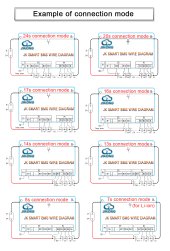gray webber
New Member
- Joined
- Feb 4, 2022
- Messages
- 202
Hello folks.
I just received my JK-b2a24s20p BMS that I hopped would do the job for my 8s 280ah pack. If course it came without a manual so I did the search and found two conflicting options???
1-it will not work on an 8s so needs to be returned and get a b2a8s20p? The Bangood site lists it as an 8s-24s but no paperwork confirming this and after watching Off Grid Garage, it may be one that only works from 14s to 24s?
2-it will work but without manual to make certain I do not fry it I should keep searching?
Suggestions?
Thanks.
I just received my JK-b2a24s20p BMS that I hopped would do the job for my 8s 280ah pack. If course it came without a manual so I did the search and found two conflicting options???
1-it will not work on an 8s so needs to be returned and get a b2a8s20p? The Bangood site lists it as an 8s-24s but no paperwork confirming this and after watching Off Grid Garage, it may be one that only works from 14s to 24s?
2-it will work but without manual to make certain I do not fry it I should keep searching?
Suggestions?
Thanks.




